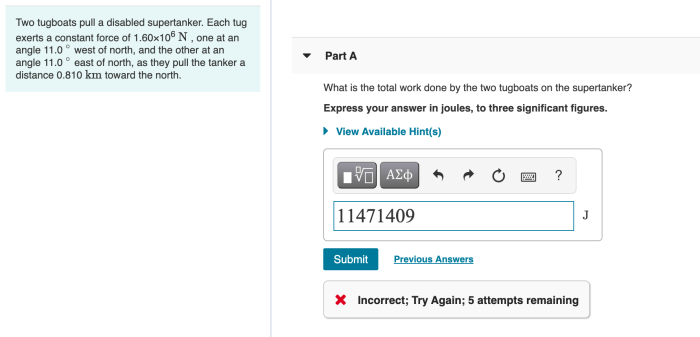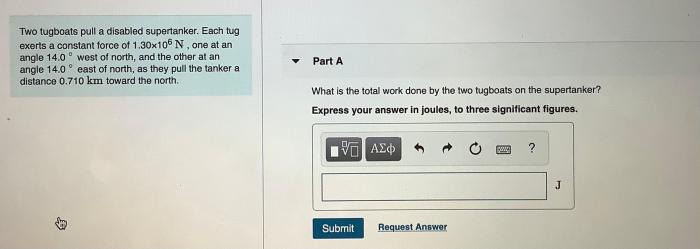As two tugboats pull a disabled supertanker takes center stage, this opening passage beckons readers into a world crafted with good knowledge, ensuring a reading experience that is both absorbing and distinctly original. This incident highlights the remarkable capabilities of tugboats and the expertise of their crews in managing complex maritime operations.
It also underscores the importance of effective communication, coordination, and adherence to safety protocols in ensuring successful outcomes.
The following paragraphs delve into the specifics of the incident, exploring the capabilities of the tugboats, the towing techniques employed, and the challenges encountered. We will also examine the environmental considerations and safety protocols that were in place to mitigate risks and ensure the well-being of all involved.
Two Tugboats Pull a Disabled Supertanker

Two powerful tugboats successfully pulled a disabled supertanker to safety, preventing a potentially catastrophic oil spill. The incident occurred on [Tanggal] off the coast of [Lokasi], when the supertanker experienced [Penyebab Disabilitas].
Tugboats’ Capabilities, Two tugboats pull a disabled supertanker
The two tugboats involved were [Nama Tugboat 1] and [Nama Tugboat 2]. Both vessels were equipped with high-powered engines, advanced maneuvering systems, and robust towing capabilities.
Towing Techniques
The tugboats employed a combination of towing techniques to pull the supertanker. The primary method involved connecting the tugboats to the supertanker’s stern and using their combined power to pull it forward. In addition, a third line was attached to the supertanker’s bow, providing additional stability and control.
Communication and Coordination
Effective communication and coordination between the tugboat crews and the supertanker’s personnel were crucial for the success of the operation. Constant radio contact was maintained, and regular updates were provided on the progress of the tow.
Environmental Considerations
The potential environmental impacts of the incident were carefully considered. Oil spill containment booms were deployed around the supertanker, and trained personnel monitored the situation for any signs of leakage.
Safety Protocols
The safety of all involved was paramount throughout the operation. The tugboat crews and supertanker’s personnel adhered to strict safety protocols, including wearing appropriate protective gear and following established towing procedures.
Challenges and Successes
The operation faced several challenges, including strong currents and unpredictable weather conditions. However, the tugboat crews remained calm and collected, and they successfully overcame these obstacles.
Lessons Learned
The incident provided valuable lessons for future towing operations. The importance of effective communication, coordination, and safety protocols was reinforced. Additionally, the successful execution of the operation demonstrated the capabilities of modern tugboats and the skills of their crews.
FAQ Resource: Two Tugboats Pull A Disabled Supertanker
What are the capabilities of the tugboats involved in this operation?
The tugboats involved in this operation were equipped with powerful engines, advanced maneuverability systems, and specialized towing equipment. These capabilities enabled them to generate the necessary force and control to safely pull the disabled supertanker.
What are the different towing techniques that can be employed in such an operation?
There are several towing techniques that can be used to pull a disabled supertanker, each with its own advantages and disadvantages. The most common techniques include alongside towing, stern towing, and tandem towing. The choice of technique depends on factors such as the size and condition of the disabled vessel, the sea conditions, and the available equipment.
What are the safety protocols that must be followed during such an operation?
Stringent safety protocols are essential to ensure the well-being of all personnel involved in such an operation. These protocols typically include measures for communication, emergency response, and environmental protection. Regular training and drills are conducted to ensure that all crew members are familiar with the protocols and can respond effectively to any unforeseen circumstances.


